Israel confirms hostage deal back on after Hamas delay
Hamas set to release 13 more Gaza hostages, bringing total of released as part of the deal to 26 • Ceasefire in effect


WATCH LIVE: Israel-Hamas hostage deal moves forward amid Egyptian intervention
Hamas was set to release 13 more hostages on Saturday • Israel official: We will decide when to tear the rope
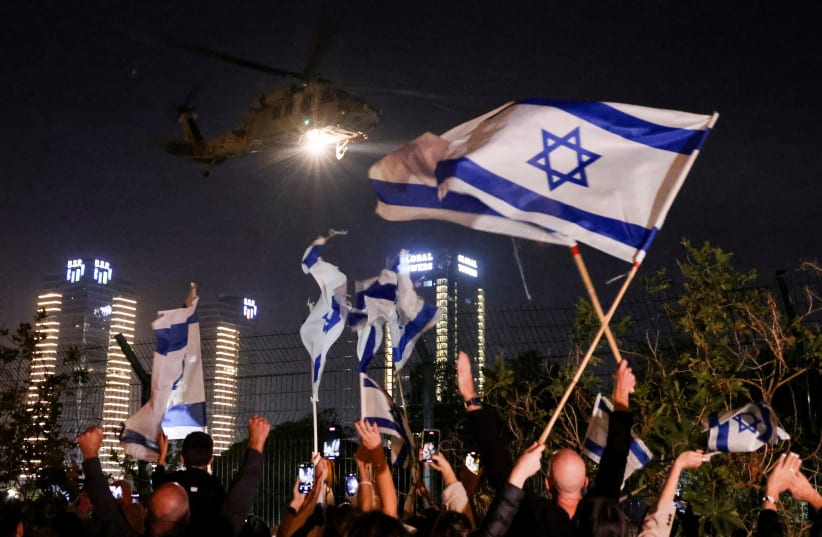
The second phase of the Gaza hostage deal appeared to move forward last Saturday night after a delay of at least five hours after Hamas announced that the deal was on hold.
Close to 9 p.m., Hamas stated that “the Islamic Resistance Movement Hams responded to the estimated Egyptian Qatari efforts that moved throughout the day to ensure the continuation of the temporary armistice agreement after transferring then in the commitment of the occupation to all the conditions stipulated in the agreement.”
It had earlier argued that not enough humanitarian aid had entered Gaza through the Egyptian crossing at Rafah and that Israel had not freed agreed-upon Palestinian prisoners based on seniority.
Qatari, Egyptian and Israeli officials had worked to save the deal.
Go to the full article >>Israel rejects Hamas ceasefire demand to leave Gaza's Shifa - report
IDF Spokesperson R.-Adm. Daniel Hagari on Thursday evening noted that no aspect of the hostage deal is set in stone "until it happens...it is subject to changes," he said in a daily briefing.

Israel vehemently rejected a Hamas demand for Israeli forces to retreat and withdraw from the Shifa Hospital in Gaza, N12 reported on Thursday.
As per the report, the Palestinian terrorist group's request came as a last-minute demand in the Qatar-mediated deal to release some 13 hostages for four days of ceasefire in the Strip.
IDF Spokesperson R.-Adm. Daniel Hagari on Thursday evening noted that no aspect of the hostage deal is set in stone "until it happens...it is subject to changes," he said in a daily briefing.
"We have difficult days of grief and happiness ahead of us," Hagari said. "We embarked on a long journey and we have targets to achieve - destroy Hamas, bring the hostages home, and bring order to the region and our borders."
The spokesperson stressed that, as part of the agreement, Israeli forces will remain inside the ceasefire line marked inside the Gaza Strip. The IDF will have freedom of movement in that area for the duration of the ceasefire, he added.
The IDF and the Shin Bet confirmed having arrested the director of Shifa Hospital earlier on Thursday.

Gaza ceasefire a 'brief respite,' war to continue for two months - Gallant
The ceasefire in Gaza is a "brief respite" from the war, which could last for a further two months, Defense Minister Yoav Gallant told Israeli forces from the IDF's elite Shayetet 13 Unit on Thursday.
"This respite will be brief," Gallant said, "what is expected of you is to get organized, prepare, examine, and re-arm ahead of what is next. There will be a continuation to the war because we must complete our victory," the defense minister added.
"There will be massive fighting over the next month or so," he told the fighters.
Go to the full article >>Otzma Yehudit MK calls for control of Gaza Strip
Limor Son Har-Melech called for a settlement to build the Gaza Strip anew following the end of the war with Hamas.
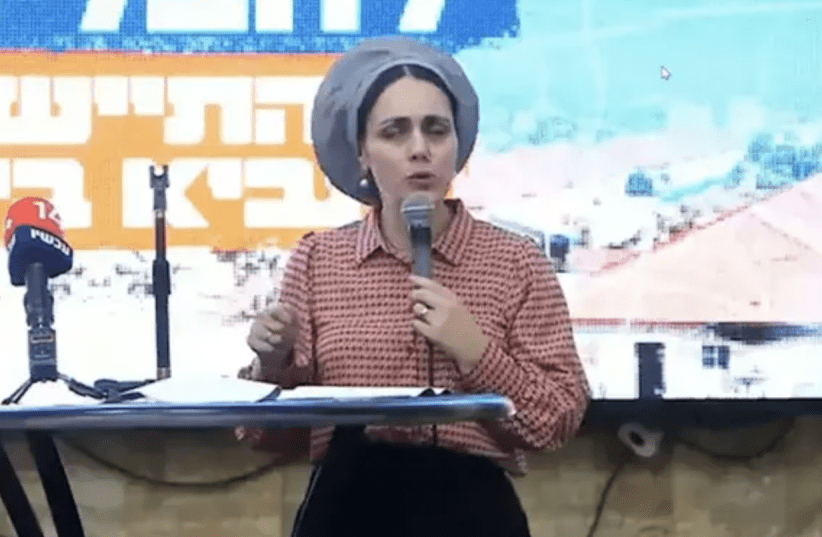
Otzma Yehudit MK Limor Son Har-Melech spoke at a conference Wednesday, calling for the future settlement of the entirety of the Gaza Strip at the end of the war.
At a conference of activists Wednesday in Ashdod under the name "Returning to the Gaza Strip," MK Son Har-Melech said that "there is no escape from returning and fully controlling the Gaza Strip, full control that will include extensive and flourishing settlement in the entire strip. Not like the Gush Katif settlements that were concentrated in a few isolated areas, but settlement for the entire length and width of the strip."
Likud MK Tally Gotliv was also present at the conference, and said that a "wall and a tower in the north of the Gaza Strip are needed immediately."
Gotliv later expressed doubts about the deal to release the hostages in Gaza. She said, "I've been on the Foreign Affairs and Security Committee since I entered the Knesset. I heard the Shin Bet and Mossad say that Hamas is deterred, 'It shouldn't be,' of course. Now I have to trust the security forces who tell me that a hostage deal should be made?"
Likud MK Ariel Kellner, head of the Samaria Council Yossi Dagan and Eliyahu Liebman, head of the Kiryat Arba Council whose son was kidnapped to Gaza, also participated in the conference.
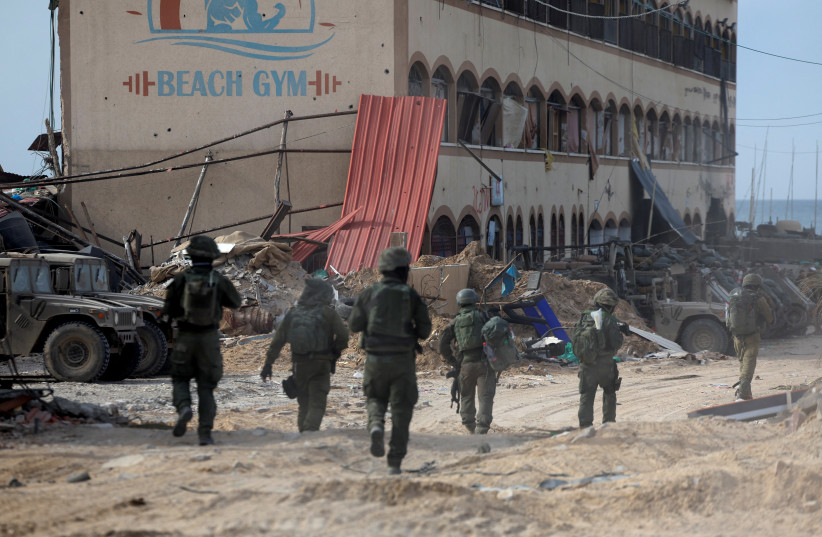
The IDF remains ready at all costs
In the meantime, the IDF continues to promote operational readiness for an attack in the southern Gaza Strip on the basis of the intelligence flowing from the Shin Bet and the Southern Command in preparation for a large-scale ground maneuver.
Since the beginning of the war, the IDF has been content only with airstrikes and artillery fire against terrorist targets in the Khan Yunis area and Rafah, and avoided ground maneuvering in the area. At the beginning of the week, the IDF presented plans for the continuation of ground fighting in the Gaza Strip, and Defense Minister Galant emphasized the intention to continue the maneuver in the Gaza Strip.
According to the estimates of senior officials in the security system, senior Hamas officials Yahya Sinwar, Muhammad Daf and Marwan Issa are entrenched underground in Khan Yunis, and in order to reach them or to destroy them, they must be pushed deep into the Palestinian territory there. "They have used the last few years to build underground systems at a very high engineering level, under sensitive facilities, including around hospitals," said a senior security official, "only this time we are coming much more prepared , after the 'peeling' of the underground capabilities in Gaza, with an emphasis on Shifa."
Meanwhile, criticism is growing against the war cabinet and senior security officials, who did not approve of attacking parts of the Gaza Strip from the beginning of the war, even though they see it as Hamas' "oxygen pipe" to the Gaza Strip. According to sources in the security establishment, the IDF did not attack with bombs and missiles the axis, under which tunnels were dug that create a highway from the Palestinian side to the Egyptian side and vice versa.
Go to the full article >>IDF reveals: This is how Hamas operates in Gaza's refugee camps
During the raid, the fighters located six terrorist tunnel shafts, one of them inside a mosque and one in an orchard near the mosque.
Soldiers from the IDF's Nahal Brigade, currently operating on the outskirts of Jabalya refugee camp, uncovered multiple launchers in mosques and orchards surrounding the city, according to an IDF press release on Thursday.
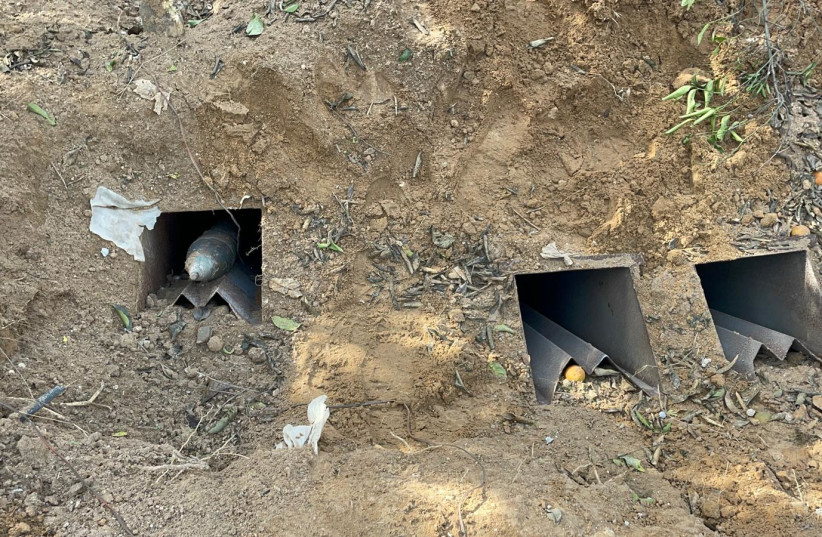
Launchers were found buried in the ground allowing for quick unaimed launches toward Israel.

During the raid, the fighters located six terrorist tunnel shafts, one of them inside a mosque and one in an orchard near the mosque.
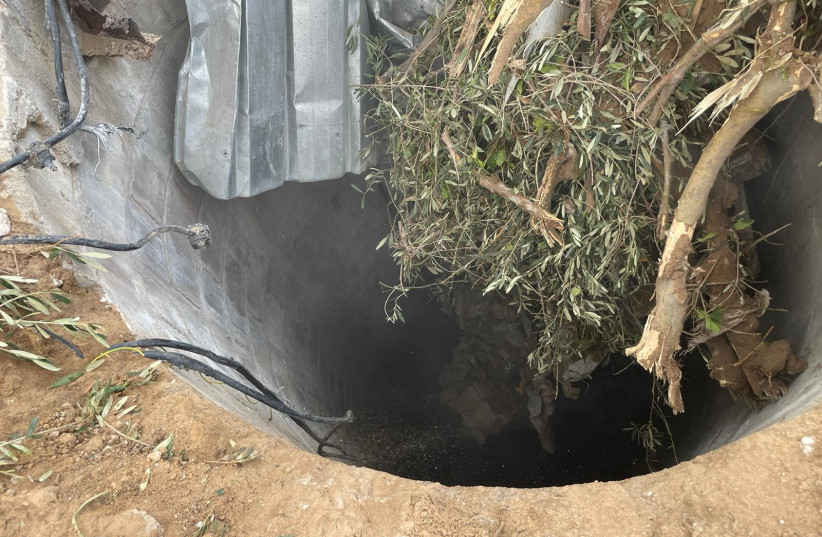
All of the weapons and rockets were located near civilian buildings, schools, and residences in the area.
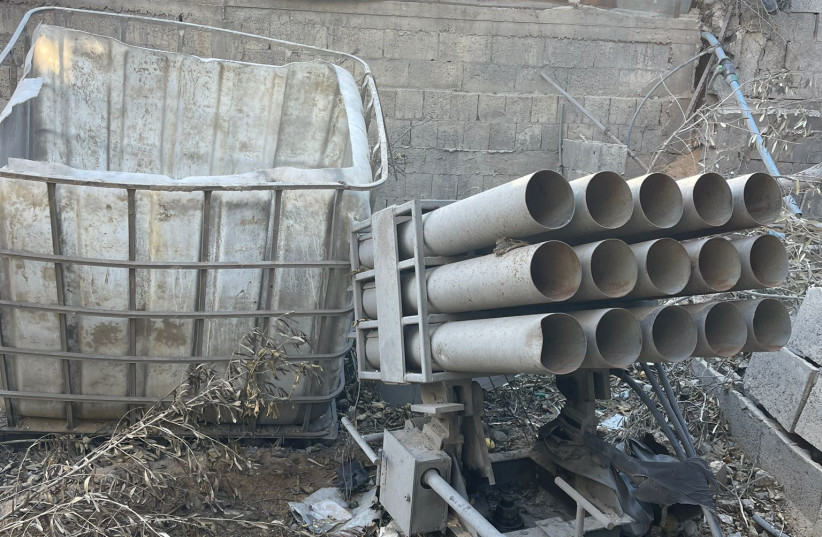
One of the rocket launchers found at the back of an orchard, it is fixed into the ground and surrounded by the fallen fruit from the orchard.
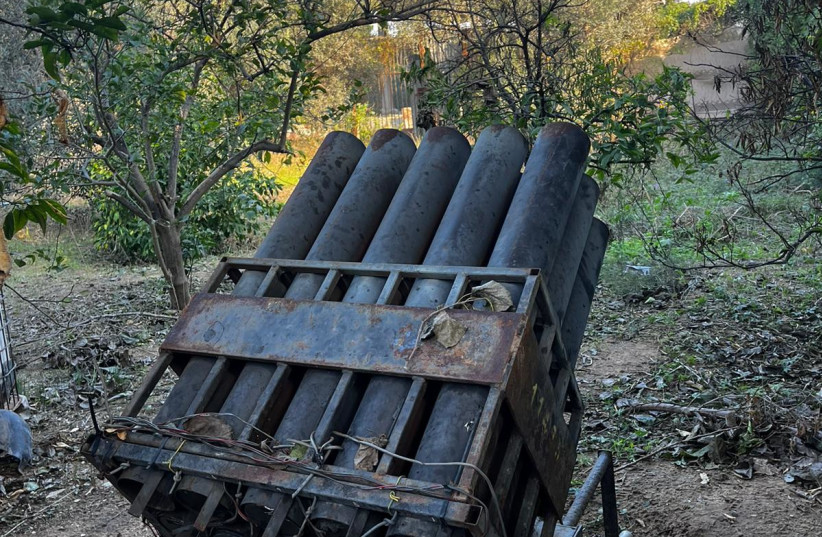
The same launcher as above from behind, where the rocket launcher is clearly visible near a construction site.

Rocket launcher as seen from the back containing rockets loaded for launch.
Go to the full article >>IDF elite intel officer warned about Hamas attacks, ignored - report
This is the response they received from him: "I don't want to hear about this nonsense again. If you bother me with these things again, you will stand trial."
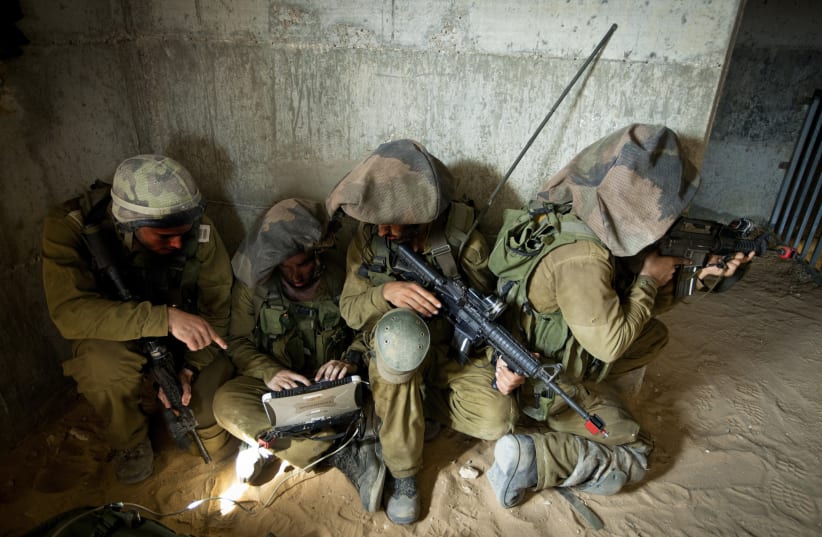
A junior Israeli officer in the elite 8200 intelligence unit warned over Hamas's plan of a mass infiltration event and was ignored by her commanders, N12 reported on Thursday evening.
The officer claims to have warned for the past 12 months about a scenario that involves a mass intrusion event by Hamas, foreshadowing what occurred on October 7.
She turned to her commanders, but they did nothing. "You are imagining it," her commanders were quoted by N12 as telling her.
Last week, Channel 12's Weekend News program published new testimonies of female observers who served near the Gaza border.
In the testimonies of the observers, they tell how for months they warned repeatedly about changes they see in the field, which require special attention and raising red flags.

IDF officer on warnings: I don't want to hear this nonsense again
According to them, they told their commanders that there were training sessions, anomalies, and preparations near the border.
Among other things, they described how more and more people who had never visited this area suddenly come to it, how farmers who used to come day after day to work the fields suddenly don't come to the place and are replaced by others, and above all they recognize another feature, one that rang all the bells.
Those female observers felt that they were not being listened to and that what they were seeing was not being counted.
There were those who decided to alert one of the senior commanders in the sector, and this is the response they received from him: "I don't want to hear about this nonsense again. If you bother me with these things again, you will stand trial."
The IDF spokesman's response to the case: "These days, the IDF is working and fighting the murderous terrorist organization Hamas in the Gaza Strip. All commanders and soldiers are focused on this mission only, to complete the goals of the war. After the end of the war, a detailed and in-depth investigation will be conducted on the matter to clarify the details to the end."
Go to the full article >>Why Israel had no choice but to make a ‘bargain with the devil’
To understand the dilemmas and pressures Israel is facing, I spoke with law professor Robert Mnookin, author of the 2010 book, “Bargaining with the Devil: When to Negotiate, When to Fight.”
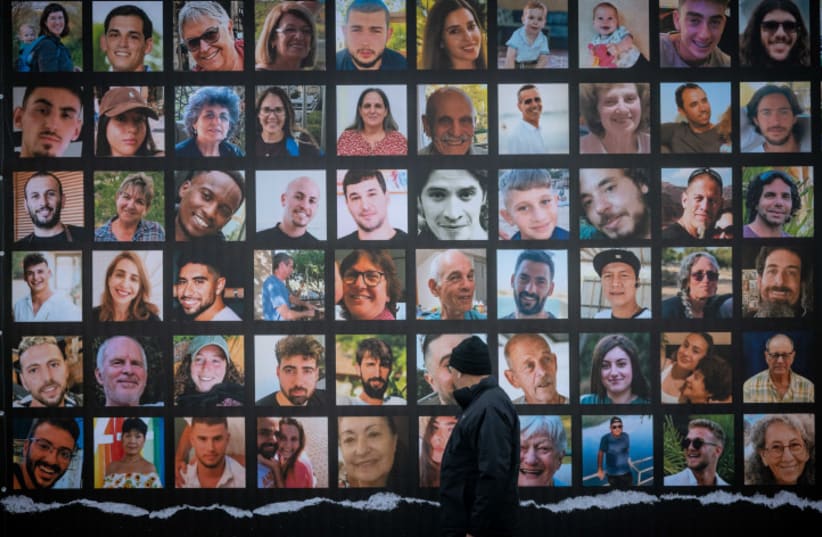
In pressing for a deal that could see the release of 50 of the more than 200 hostages held in Gaza in return for a four-day pause in hostilities the release of 150 Palestinian prisoners, Israel’s National Unity Party Minister Benny Gantz described the return of the hostages as a “moral imperative and part of the resilience that enables us to win wars.”
But what if negotiating with Hamas, considered a terrorist group by Israel, creates a dangerous precedent and further encourages its enemies to view hostage-taking as a weapon? By putting its war on Hamas on a four-day hold, does Israel appear to be giving in to an enemy it has vowed to destroy? And by releasing three Palestinian prisoners for every hostage returned, does Israel risk allowing violent prisoners to go free?
These are the unbearable tensions Israeli and American negotiators faced in the leadup to the deal, announced Tuesday night. To understand the dilemmas and pressures Israel is facing, I spoke with law professor Robert Mnookin, director of the Harvard Negotiation Project at Harvard Law School and author of the 2010 book, “Bargaining with the Devil: When to Negotiate, When to Fight.” Mnookin advises governments and corporations on negotiating strategy and conflict resolution and has written about Israel’s controversial hostage swaps with Hamas and other adversaries.
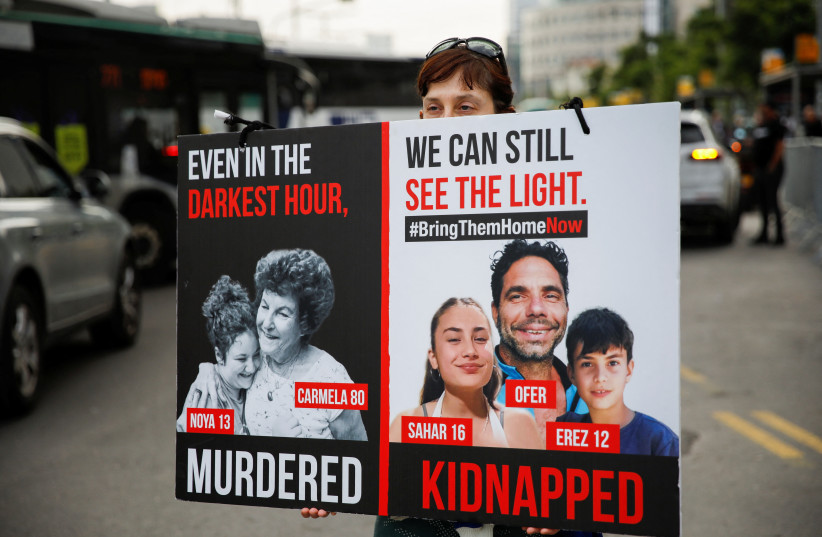
Robert Mnookin analyzes the situation
He is also the author, in 2019, of “The Jewish American Paradox: Embracing Choice in a Changing World,” a book about Jewish peoplehood and identity.
We spoke Wednesday about the political pressure on Israel to strike a deal, how religious and national values play a role in hostage negotiations and why a “no-win” scenario is sometimes the best you can do.
The conversation has been edited for length and clarity.
Before we get into the details of this specific hostage exchange, I wonder if you could provide a theoretical framework for hostage negotiation, especially with an enemy deemed terrorists. What should any power consider before embarking on negotiations essentially with kidnappers?
One hard question, of course, is, are they likely to keep to the deal that you make with them? Kidnappers aren’t necessarily a reliable partner to a negotiation.
A second big issue is the question of precedent. What kind of precedent are they setting by being willing to negotiate? For many years, the United States government took the position that it would not negotiate with terrorists to try to release kidnap victims. And there was a lot of tension [between the government and victims’ families]. The stated policy was often informally violated by the U.S. government, that is, they sometimes did participate. And in fact, it turns out that European countries were negotiating with various — often Islamic — terrorist groups in the last decade, were paying money to get people released. The United States wasn’t and it changed its formal policy.
That they would pay ransom?
Not necessarily, but they no longer had an absolute policy that there should not be any contact between the government and terrorist groups with respect to kidnap victims.
You wrote an op-ed critical of the decision in 2011 by an earlier Netanyahu government to release about 1,000 Palestinian prisoners in exchange for Gilad Shalit, an Israeli soldier kidnapped by Hamas in 2006 and held hostage in Gaza. What made you call that a “crazy deal” and what might be different about the current situation?
There were lots of things wrong with that deal. First, the price was absurdly high. Second, it set a terrible precedent. And third, as it turns out, that deal strengthened Hamas and weakened the Palestinian Authority, because the Israeli government was negotiating with Hamas, who made sure the Palestinian Authority would get no credit. And comparatively few of the Palestinian Authority’s prisoners were released. And finally, it turns out of course, that among those released are at least some who now are apparently leaders of Hamas.
On the other hand, obviously, I’m thrilled that Shalit was released.
When you heard the terms of the deal Tuesday night and Wednesday morning, how did it strike you as someone who has an expertise in negotiations? Was there a winner? Was there a loser?
Well, listen, these kinds of negotiations often involve tragic choices. Who could not be very happy that women and children are being released? On the other hand, while we don’t really know the details of who’s being released by the Israeli government, I gather many of them are minors who participated in rather violent acts or very violent acts.
Should Israel worry that negotiating over hostages in this case is going to encourage its enemies to engage in more kidnapping?
They absolutely should.
Israel has a national ethos of returning its soldiers and protecting its citizens above all else — including by taking actions, like lopsided hostage swaps, that might endanger soldiers and civilians in the future. Do these sort of emotional goals — for the sake of national solidarity or morale, or even the religious imperative of pidyon shvuyim, or redeeming hostages — strike negotiation experts as irrational?
I don’t want to call it irrational because it may reflect and reinforce values that are really quite important. Israel has a tradition that no soldier would be left behind. Given that Israel has an army in which nearly all Jewish people participate, a truly citizens’ army, the Shalit deal was, for all its flaws, a valuable reinforcement of that ideology.
Israel is also a small country, and the degree of separation among its citizens is incredibly small. I imagine that any idea that it won’t negotiate with terrorists is impossible to maintain politically and morally when there are so many stories and they are so personal.
This is something I talked about in my oped many years ago, which is a very important psychological finding that people, in order to save identifiable individuals, are willing to take actions that are far more costly than actions that could save many more unspecified individuals. The classic example of this is when an individual is trapped in a coal mine: It becomes national news, and rescuers might spend millions of dollars to get them out — while the same government authorities are unwilling to spend anywhere near an equivalent amount on safety measures that would ultimately save many more people.
What we’ve seen in Israel, with so many victims, the political pressure is very, very substantial. You’ve seen these posters of all the individual kidnap victims. The families are trying to personalize it — appropriately, because it’s a good strategy. My wife last night was brought to tears with interviews of the family of one of the victims because their story was so sad. There’s this little girl, for example, who’s going to be 4 on her birthday, which is Friday. [Abigail Edan was kidnapped on Oct. 7; Hamas killed her parents, Roy and Smadar Edan; she is a U.S. citizen and President Joe Biden said he expects her to be released.]
Of course a government should be willing to work very hard to get her release. How can you feel they should not do so? These are very hard choices that governments have to face.
What did each side achieve in this deal?
What the Israelis achieved, of course, is that some fraction of the 200-plus hostages are being released and that there are going to be children and women among them. And the suspension of hostilities from Israel’s perspective is comparatively brief. As for Hamas, they’re getting credit for the release, they’re getting a rest in terms of hostilities and there’s going to be substantial humanitarian aid.
The other thing that I think is interesting about this arrangement, of course, in part goes to the reliability issue. They’re doing an arrangement where the hostages are going to be released partially each day, which is a way of reinforcing the ceasefire. Whereas if they were all released right in the beginning, Hamas would be taking the risks that the Israelis might immediately resume hostilities.
Do you accept the idea that a successful negotiation is one in which both sides are disappointed?
No. If the people are rational actors, it should create an outcome that each side views as superior to what their best alternative otherwise would be. Now, it is often the case that the negotiated deal is disappointing in comparison with a perfect world. But on the other hand, almost by definition, if you and I settle a terrible dispute, we wouldn’t have made a deal if we didn’t think it was superior to our expected alternative. And what’s often true is sometimes you and I could settle a conflict with an arrangement that makes us feel positive about doing business together in the future. The views and opinions expressed in this article are those of the author and do not necessarily reflect the views of JTA or its parent company, 70 Faces Media.
Go to the full article >>
Israel-Hamas war: How quickly can Hamas recover from Gaza defeat? - analysis
Hamas units in northern Gaza have been surrounded. They have been pushed out of numerous neighborhoods such as Sheikh Ijlin, Shait, Beit Hanoun, Rimal, parts of Zaytun and Jabalya.
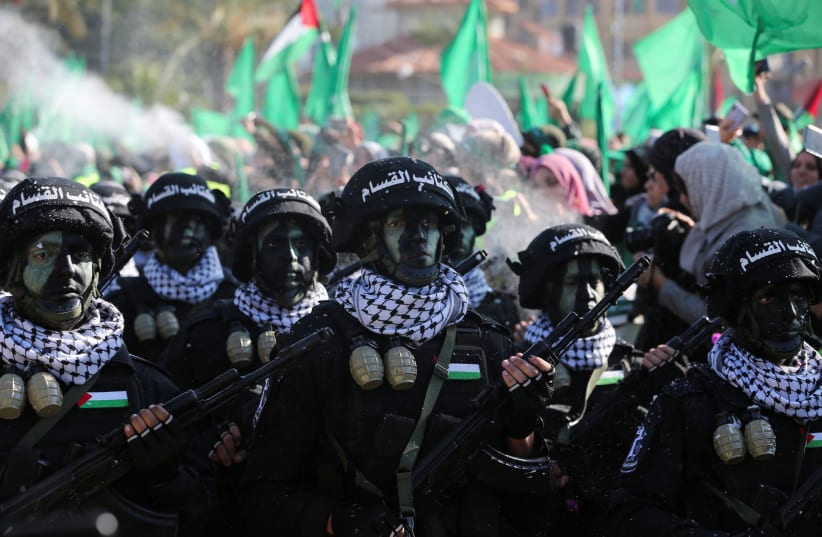
Hamas has suffered numerous casualties in Gaza since its surprise attack against Israel on October 7, but the total number is impossible to know. Israel has given various estimates on the number of Hamas members eliminated in certain areas or units. In general, the IDF issues details on the number of targets struck.
On Thursday, for example, the IDF said: “During IDF activities in the Gaza Strip over the last day, aerial strikes were carried out on more than 300 Hamas terrorist targets, including military command centers, underground terrorist tunnels, weapons storage facilities, weapons manufacturing sites, and anti-tank-missile firing posts.”
Can Hamas recover from the losses it has suffered since October 7? Its units in northern Gaza have been surrounded. They have been pushed out of numerous neighborhoods, including Sheikh Ijlin, Shati refugee camp, Beit Hanun, Rimal, parts of Zeitoun and Jabalya, and Beit Lahiya. Hamas has lost most of its territory in northern Gaza. Its units that tried to stay and fight were eliminated.
The question about Hamas survival in the face of these losses revolves around many factors. Other terrorist groups have shown they can fight to the end, basically to the very last man, as ISIS did in Mosul.
In other cases, some ISIS members tried to surrender. For instance, some did near Tal Afar, as they also tried to surrender near Baghouz on the Euphrates River in 2019. There are mixed examples of what happens when terrorist groups are surrounded.

Hamas has no way to replace its fighters in northern Gaza. The ceasefire will leave them surrounded. They have short interior lines and can shift units around, but it is unlikely they can replenish their units.
A study conducted in 1986 about combat casualties and whether units remain effective may shed light on what comes next for Hamas. First, we need to understand how Hamas is organized. It isn’t just a terrorist group with cells and rabble. It has become a kind of terrorist army; it ran Gaza since 2007 and had to turn its terrorist cells into a kind of fighting force. It may have learned how to do this from other Iran-backed groups, such as Hezbollah, Iranian militias in Syria, or the Kataib Hezbollah in Iraq.
Reports on November 13 suggested that 10 Hamas battalions in northern Gaza had been degraded. This means many of their commanders had been eliminated. Hamas has about 24 battalions in Gaza. Overall, it is estimated to have 140 companies within these battalions. A company of men usually has up to 100 fighters. A battalion can have several hundred.
Hamas had around 30,000 fighters on October 7. Some of them were killed invading Israel. Some have been detained. Some special units, such as Hamas naval commandos, have been eliminated.
Hamas’s main fighting unit is the battalion level. It has “brigades” as well, which include the battalions. The brigade level will include anti-tank missiles, snipers, rockets, and mortar arrays.
Some Hamas battalions in Gaza appear to have been completely shattered. The Shati Battalion was badly mauled because it fought the IDF not only in the area of Shati, near the beach northwest of Gaza City, but also around Shifa Hospital. It was hammered by IDF units in this area and apparently lost 200 terrorists, according to estimates.
The relationship between battle losses and performance
A report in 1986 compiled by Leonard Wainstein at the Institute of Defense Analysis near Washington, DC, analyzed the “relationship of battle damage to unit combat performance.” He surveyed Western armies in his discussion of whether units will break down when they suffer high casualties.
It is generally assumed that a unit in a Western military that suffers a certain percent of losses, such as 15% or 20%, can continue to function.
Wainstein wrote: “The impact of those casualties on the cutting edge – the rifle companies, tank crews, assault engineers – has clearly grown with time, as the number of men in the cutting edge shrank and support echelons expanded. The capacity of the armies of the First World War to absorb tremendous losses and yet continue to function was due in part to the larger proportion of fighting men in the total.”
Another unclassified US Army study from the 1950s asked: “Does a unit lose its combat effectiveness because it lacks a certain requisite number of bodies, each type of breakpoint being caused by a given depletion in numerical strength? If this be true, the arrival of sufficient replacements should restore the unit’s ability to carry out its mission. But intuition suggests that, in addition to numerical strength, certain psychological factors closely related to losses, also to length of time in combat, are factors termed attrition.”
Wainstein argued that the morale of units can be affected by various factors.
“It can also be influenced by the awareness of the individual soldier of the personal well-being and fate of his immediate comrades,” he wrote. “This need not always be negative. The most cogent example is obviously the effect on the individual of the sight of dead and wounded comrades.
“Casualties are certainly the most visible and forceful indications of the latent horror of combat. Soldiers not exposed to casualties close to them can view battle of the most savage degree in a somewhat detached manner, but the realization of the danger they face will be brought home vehemently when casualties begin to occur among their immediate ranks. The corrosion of motivation then begins.”
“Where morale of troops is high, even very heavy casualties will not put the formation out of action,” Wainstein concluded.
Terrorist groups can be defeated, casualties alone don't determine the outcome
There are many complex elements involved. The overall sense is that casualties alone will not determine whether Hamas continues to fight and whether it can recover quickly from the blows it suffered since October 7.
The terrorist group has shown in the past that even if it suffers losses, it continues to exist. During the Second Intifada, for instance, Israel targeted the Hamas leadership. Palestinian terrorist groups in Gaza have also been defeated in the past, such as operations in the 1970s, only to reappear decades later.
Terrorist groups can be defeated. Hamas may suffer some kind of organizational collapse if the pressure on its units becomes too high. If Hamas sought over the years to create a more disciplined force, with command and control, it will suffer if the command and control and commanders of units are eliminated.
This appears to have happened to some degree in northern Gaza. Nevertheless, the group is still there and holds ground in Gaza City itself. It doesn’t have very many civilians to use as human shields because most have fled to southern Gaza.
In southern Gaza, however, it now has a huge number of civilians to hide among. This hints at many complexities in the future.
Go to the full article >>Israel-Hamas ceasefire begins; Hostages to be released at 4 p.m.
Some 13 hostages set to be freed from Gaza at 4 p.m. on Friday • Israel received list of released hostages, Netanyahu confirms
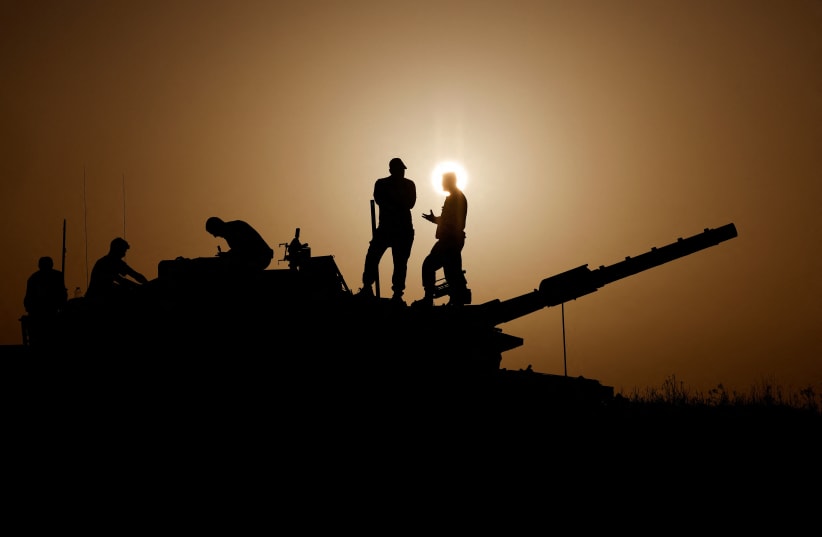
Israel-Hamas War:
- Hamas launched a massive attack on October 7, with thousands of terrorists infiltrating from the Gaza border and taking some 240 hostages into Gaza
- Over 1,200 Israelis and foreign nationals were murdered, including over 350 in the Re'im music festival and hundreds of Israeli civilians across Gaza border communities
- 13 hostage released as of Saturday as part of hostage deal which includes a four-day ceasefire, after which the IDF vows to continue fighting